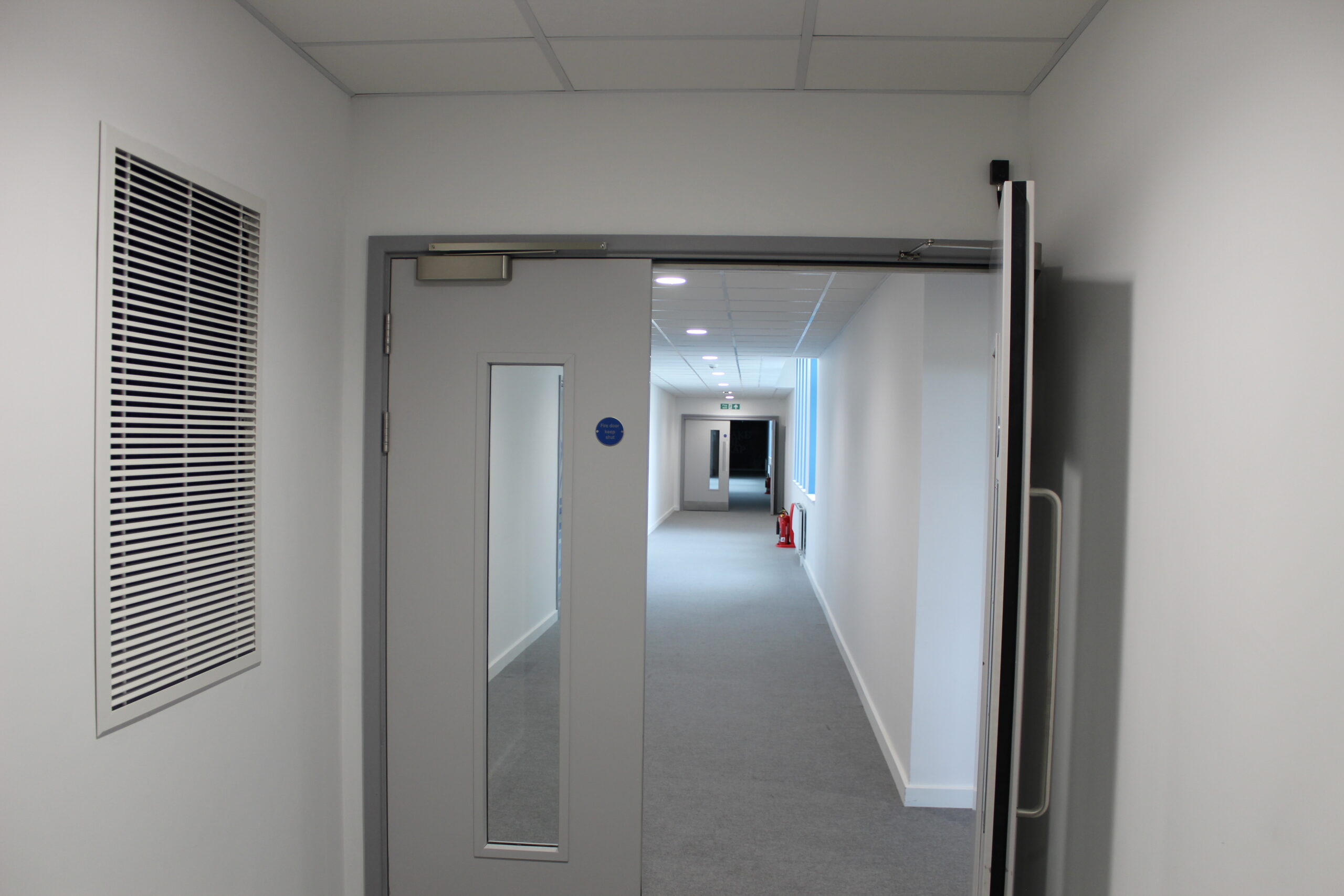Following our April update to Approved Document B (ADB), we have summarised the latest key changes that will come into effect over the next five years.
ADB provides guidance on how to meet the fire safety requirements of the Building Regulations in England. The latest updates to ADB reflect evolving safety standards and best practices to address emerging fire risks and improve overall safety in buildings.
March 2025
Regulation 38 (Fire Safety Information) Updates:
Sprinkler Requirements in Care Homes:
- New regulations will likely mandate the installation of sprinklers in care homes to enhance fire safety.
Compartment Sizes:
- There will be a limit on the size of fire compartments, with a maximum size of 10 being enforced. This is to ensure that fire can be contained more effectively within smaller areas, reducing the risk of rapid spread.
National Classes for Reaction to Fire:
The current national classifications for reaction to fire will be removed, and only European (EN) classifications will be used. This aims to standardize fire safety measures across the EU and ensure consistency in how materials are assessed for fire performance.
These changes are intended to improve fire safety standards and ensure that care homes and other buildings adhere to up-to-date safety practices. If you’re involved in building management, construction, or fire safety, it would be crucial to stay informed about these updates and plan accordingly to comply with the new regulations.
The change is referenced in ADB, to which regulation 38 has been updated with the following:
38. Fire safety information
(1) This regulation applies where building work:
(a) consists of or includes the erection or extension of a relevant building; or
(b) is carried out in connection with a relevant change of use of a building, and Part B of Schedule 1 imposes a requirement in relation to the work.
(2) The person carrying out the work must give fire safety information to the responsible person no later than:
(a) where the building, proposed building or extension to which the building work relates is not occupied during the building work, the date of completion of the work or the date of occupation of the building or the extension, whichever is the earlier;
(b) in any other case, the date of completion of the work.
(2A) The responsible person must give the person carrying out the work a notice acknowledging receipt of the fire safety information and confirming the information provided is sufficient to enable them to understand, operate and maintain the building (and the fire safety systems in it) after the building work in question.
(2B) Subject to paragraph (2D), the person carrying out the work must give a notice to the relevant authority:
(a) confirming that they have given the fire safety information to the responsible person pursuant to paragraph (2), and
(b) stating that they have received the notice from the responsible person pursuant to paragraph (2A) or where they have not received the notice, stating the steps taken to obtain the notice from the responsible person and the dates they were taken.
(2C) The notification under paragraph (2B) must be given no later than:
(a) where regulation 20 (provisions applicable to self-certification schemes) applies to the work, 30 days after the date referred to in paragraph (2),
(b) in any other case, five days after the date referred to in paragraph (2).
(2D) Paragraphs (2B) and (2C) do not apply where regulation 20A (provisions applicable to third party certification schemes) applies to the work and instead paragraphs (2E) to (2G) apply.
(2E) Where this paragraph applies, the person carrying out the work must notify the third party certifier appointed under regulation 12(6)(c):
(a) confirming that they have given the fire safety information to the responsible person pursuant to paragraph (2), and
(b) stating that they have received the notice from the responsible person pursuant to paragraph (2A) or where they have not received the notice, stating the steps taken to obtain the notice from the responsible person and the dates they were taken.
(2F) The notification under paragraph (2E) must be given no later than seven days after the date referred to in paragraph (2).
(2G) Within 30 days of receiving the notification under paragraph
(2E) the third party certifier appointed under regulation 12(6c) must notify the relevant authority confirming receipt of the notification under paragraph (2E).
(3) In this regulation:
(a) “fire safety information” means information relating to the design and construction of the building or extension, and the services, fittings and equipment provided in or in connection with the building or extension which will assist the responsible person to operate and maintain the building or extension with reasonable safety;
(b) a “relevant building” is a building to which the Regulatory Reform (Fire Safety) Order 2005 applies, or will apply after the completion of building work;
(c) a “relevant change of use” is a material change of use where, after the change of use takes place, the Regulatory Reform (Fire Safety) Order 2005 will apply, or continue to apply, to the building; and
(d) “responsible person” has the meaning given by Article 3 of the Regulatory Reform (Fire Safety) Order 2005.
September 2026
The upcoming changes in September 2026 regarding residential buildings with a height of 18 meters or more are set to enhance safety measures and ensure that both means of egress and accessibility are prioritised for residents in case of emergencies. Here’s a breakdown of what these changes entail:
More Than One Common Staircase:
- Residential buildings that are 18 meters or taller will be required to have more than one common staircase. This ensures that in the event of a fire or other emergency, there are multiple exit routes available for residents to safely evacuate, reducing the risk of congestion and improving overall evacuation efficiency.
Provision of Evacuation Lifts:
- In addition to multiple staircases, these taller residential buildings must include evacuation lifts. These lifts are designed specifically to aid in the evacuation of residents, particularly those with mobility impairments, during an emergency. Unlike standard lifts, evacuation lifts are built to be used in emergency situations and often come with features to ensure their operation in a fire or other emergencies.
September 2029
In September 2029, the removal of national classes for fire resistance will streamline fire safety standards across the EU.
Only European (EN) classifications will be used, aligning fire resistance assessments with broader European norms. This change aims to unify standards, making ensuring consistency and comparability in fire safety measures easier. If you’re involved in building design or construction, you must adapt to these EN classifications to ensure compliance.
If you have a project and would like to learn more about the changes to ADB and how they affect your scheme, don’t hesitate to contact one of our expert Fire Engineers.

